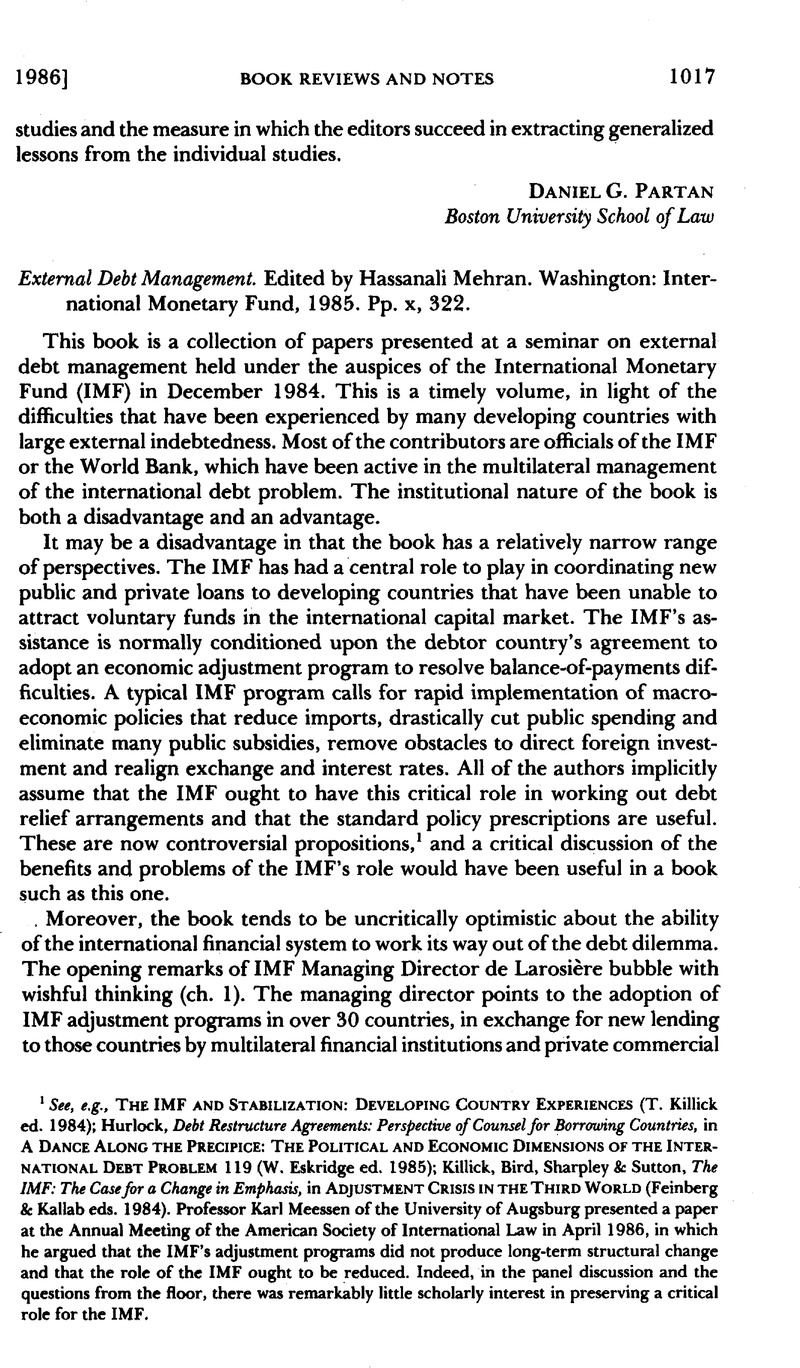No CrossRef data available.
Article contents
External Debt Management. Edited by Hassanali Mehran. Washington: International Monetary Fund, 1985. Pp. x, 322.
Published online by Cambridge University Press: 27 February 2017
Abstract

- Type
- Book Reviews and Notes
- Information
- Copyright
- Copyright © American Society of International Law 1986
References
1 See, e.g., The IMF and Stabilization: Developing Country Experiences (T. Killick ed. 1984); Hurlock, , Debt Restructure Agreements: Perspective of Counsel for Borrowing Countries, in A Dance Along the Precipice: The Political and Economic Dimensions of the International Debt Problem 119 (Eskridge, W. ed. 1985)Google Scholar; Killick, , Bird, , Sharpley & Sutton, , The IMF: The Case for a Change in Emphasis, in Adjustment Crisis in the Third World (Feinberg & Kallab, eds. 1984)Google Scholar. Professor Karl Meessen of the University of Augsburg presented a paper at the Annual Meeting of the American Society of International Law in April 1986, in which he argued that the IMF’s adjustment programs did not produce long–term structural change and that the role of the IMF ought to be reduced. Indeed, in the panel discussion and the questions from the floor, there was remarkably little scholarly interest in preserving a critical role for the IMF.
2 The published results of two colloquiums held in 1984 may be found in A Dance Along the Precipice, supra note 1; and 23 Colum J. Transnat’l L. 1 (1985).




